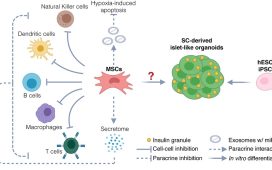AREDS-based nutritional formulations represent the most thoroughly researched intervention for maintaining visual stability in age-related macular conditions. These specific nutrient combinations emerged from the landmark Age-Related Eye Disease Studies conducted by the National Eye Institute over multiple decades. Clinical trials involving thousands of participants demonstrated measurable preservation of visual function when compared to placebo groups. The evidence-backed eye vitamins for macular degeneration work through multiple complementary mechanisms rather than single pathways. This multi-target approach helps explain why AREDS formulations consistently outperform isolated nutrients or random supplement combinations in maintaining visual stability over extended periods.
Oxidative defence network
AREDS formulations deliver strategic antioxidants that neutralize free radicals, particularly damaging to retinal tissues. The macula experiences extraordinary oxidative stress due to its high metabolic activity, constant light exposure, and abundant polyunsaturated fatty acids vulnerable to oxidation. The vitamins C, E, zinc, copper, lutein and zeaxanthin in AREDS combinations work synergistically through overlapping mechanisms that provide more comprehensive protection than single antioxidants alone. This networked defence system addresses multiple oxidative pathways simultaneously, helping preserve photoreceptor integrity despite on-going age-related challenges and environmental stressors.
Cellular repair support
- AREDS zinc levels activate critical repair enzymes that maintain cellular integrity within the retinal pigment epithelium, essential for photoreceptor survival.
- Antioxidant components shield genetic material within retinal cells from mutation-causing damage that would otherwise compromise normal function.
- Copper-zinc balance supports the proper protein creation for on-going cellular maintenance and repair throughout macular tissues.
- Vitamin E components help restore damaged cell membranes, preserving proper cellular communication essential for visual processing.
- Carotenoid elements in AREDS formulas protect cellular energy generators from oxidative damage, maintaining energy production for visual processes.
These repair mechanisms prove particularly valuable once early macular changes appear, helping stabilize compromised tissues before permanent damage occurs. The combination of protective and restorative actions explains the measured visual benefits in moderate-risk patients receiving AREDS supplements during clinical trials.
Inflammation modulation
Chronic inflammation plays a central role in macular degeneration progression. AREDS components help modulate inflammatory processes through multiple pathways, reducing tissue damage without compromising necessary immune functions. The zinc-copper balance supports proper immune regulation within retinal tissues, preventing excessive inflammatory responses while maintaining defence against pathogens. Carotenoid components reduce pro-inflammatory signalling molecules that would otherwise promote on-going tissue deterioration. This inflammation control helps preserve delicate retinal structures from collateral damage during normal immune processes, supporting overall visual stability throughout ageing.
Circulation optimization
Visual stability requires consistent blood flow delivering oxygen and nutrients while removing waste products from metabolically active retinal tissues. AREDS components support micro vascular health through several beneficial mechanisms for macular function. Antioxidant elements protect vascular walls from oxidative damage that would otherwise compromise blood flow. Zinc components support proper endothelial function necessary for regulated nutrient exchange within the retinal pigment epithelium. The combined circulatory benefits help prevent waste accumulation (drusen) beneath the retina while ensuring consistent nutrient delivery to photoreceptors critical for visual stability.
AREDS2 formulations containing lutein and zeaxanthin provide specialized protection against blue light damage, which is increasingly problematic in modern environments. These specific carotenoids accumulate within the macula, absorbing damaging blue wavelengths before they reach vulnerable photoreceptors. Recent research suggests this protective effect becomes increasingly valuable given widespread exposure to blue-light-emitting digital devices and LED lighting. The measured increase in macular pigment density following consistent supplementation correlates with improved contrast sensitivity and reduced glare sensitivity in clinical assessments.











